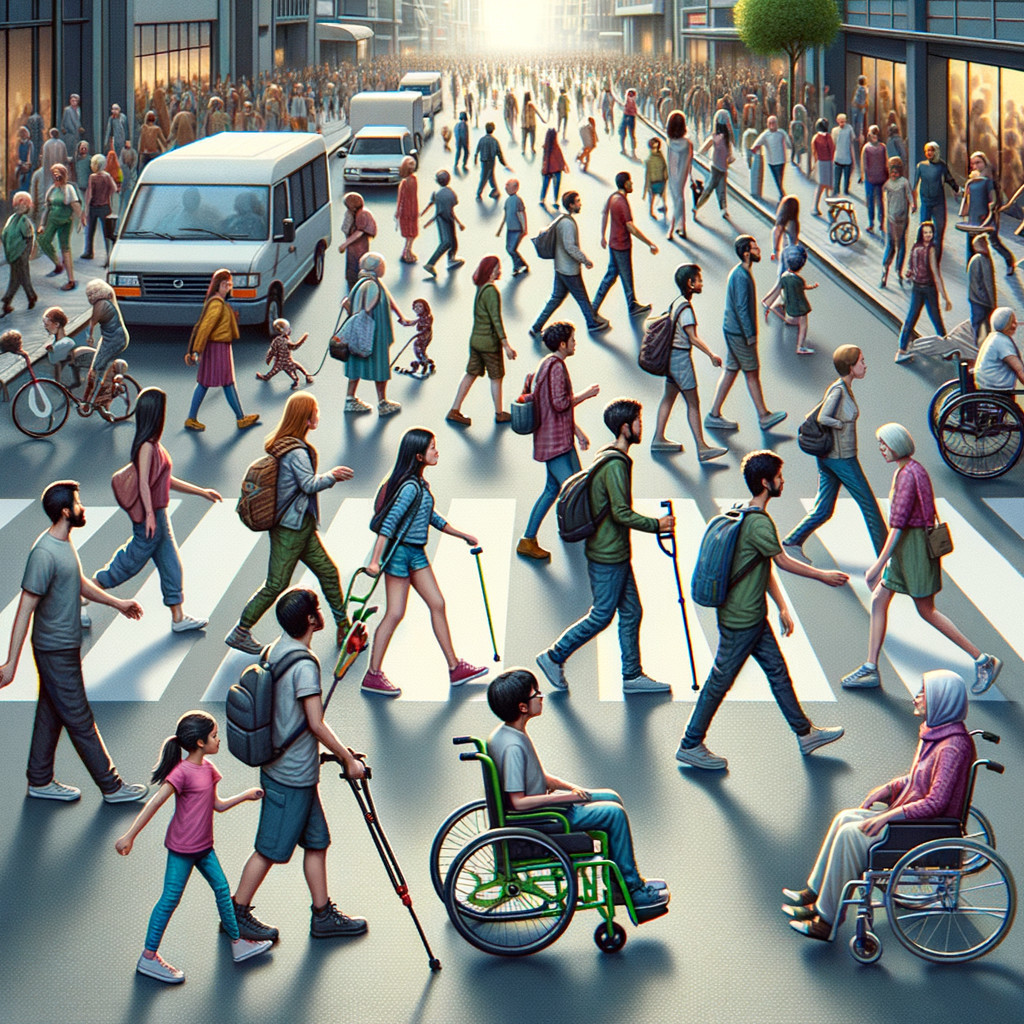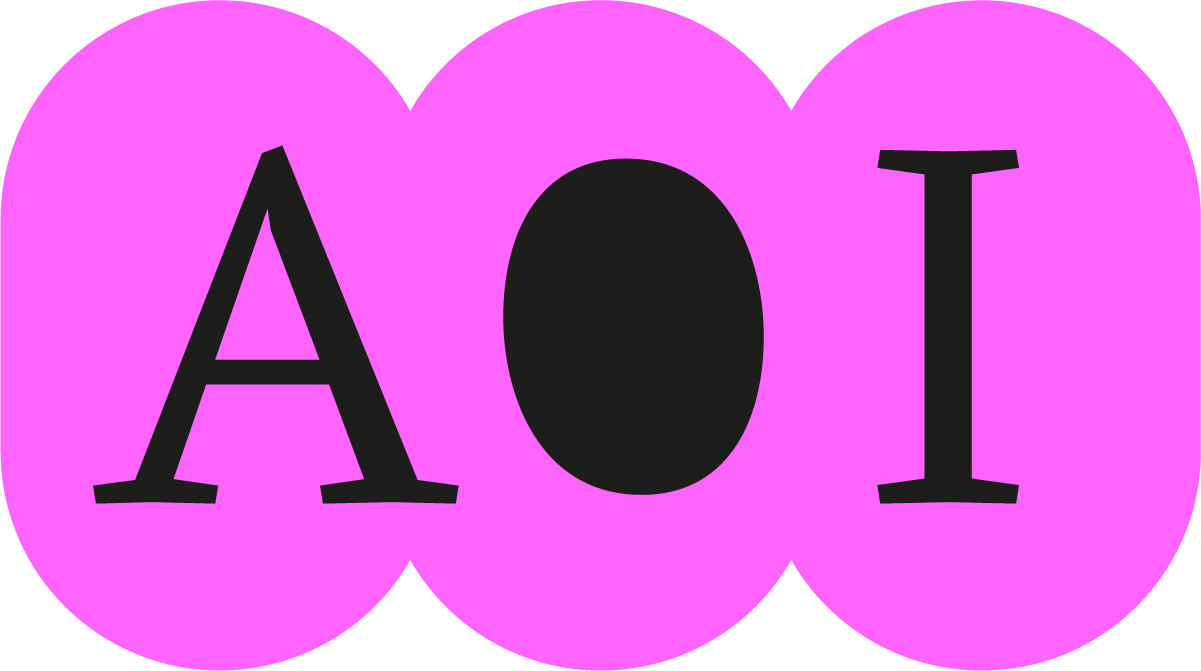This text was written by a student in the course «Emanzipationstheorien und Geschlecht» in spring 2023 and is part of the series «Sailing into another future».
Inspired in part by a reading of Virginia Woolf’s “Orlando” and her conception of gender as a historically and biographically fluid category, and in part by the discussion of trans and disability emancipation in the public discourse, I decided to envision a world where differences between individuals are not seen as aberrations, but rather accepted as common constituents of the complexity of human experience. This fictional society exists as an antidote to our own denial of difference, and acts as an idealized vision of a free, loving society.
A crowded street is filled with the noise of footsteps, wheels and sticks clattering on the ground. If anyone stopped time at this moment, at first glance, all the people would appear to form a large mass, made up of hundreds of components but all coming together to create a single collective. Then, if you kept looking at this freeze frame for longer, you would start to make out the individual components in more detail. Each one varying from the others but blurring into the masses when observed from afar. Picking out any individual person, you can make out traits that none of the others have; for example, some are walking while others are sitting in a wheelchair, using canes, or other walking aids. Some have long hair, others short, some wear trousers while others wear dresses. Some are large, some are small, and people of all ages mix with each other. Each person has their own unique combination of these (and more) traits, which result in complete difference between each individual. And yet, they all move as one.

In this care community, babies are born as people, not as boys or girls. They grow up with parents, but they are also raised by the community and spend their lives associating with everyone they come into contact with. If a child is born with or develops a condition that makes moving through life unassisted difficult, their close-knit community provides them with the support they need, because everyone knows the child well, and can help provide the necessary assistance. However, in my idealized society, what we today tend to qualify as ‘additional support,’ is not seen as an extra task or an exception that must be made. Rather, it is considered to be the customary course of action, because after all, each person is different and therefore has different needs. These needs may range from what we would consider ‘small’ allowances, such as giving someone more time to complete a task, to ‘larger’ ones, such as proving emotional or physical tools to get through everyday life. Providing a wheelchair is to them no different to giving someone directions on the street. In my idealized vision, society functions on mutual understanding and support. This is so deeply ingrained in its members’ psyches, that they aren’t aware of any ‘burden’ on them when helping others.
Over the course of an individual’s life, one may undergo changes that one actively selects, or that simply occur. An idea of identity as a fixed property can be helpful for many people, but unlike in our society, it is not seen as necessary. A person may move freely between gendered expressions, of which there are countless versions, and it is not considered strange for a person to appear in a dress and makeup on one day and with beard and trousers the next. Of course, because of the fluidity of gender and identity in this society, many people occupy a degree of androgyny that frees individuals from the need to learn behaviors specific to either extreme of the binary male-female spectrum. As a result, desire and gender find no association with one another, for how could someone love only women or only men if there are no such fixed categories? Instead, people may notice patterns in attraction – perhaps they prefer beards, perhaps long hair, perhaps neither. But because desire is so separated from gender and identity, there is little need to differentiate between these patterns of desire. Individuals simply love who they love, without having to insert themselves or others into fixed categories in order to desire.
Because in my envisioned society, differences between individuals are not seen as aberrations – or even something to be actively perceived – appropriate tools and infrastructure that support varying degrees of ability and different kinds of experience are standard. Rather than specifying a very narrow definition of what should be considered normal, as is done in our society through normative social and scientific expectations, this one accepts variation as the norm. This then results in the incorporation of different needs when creating physical as well as institutional aspects of society. Life is constructed around the knowledge that not every person functions in the same way, but that all people must nonetheless have equal access to everything. Buildings all have ramps or lifts, and schools understand that children are individuals, too, and cater to each child’s needs. Because if certain areas of society are not open to everyone, they are open to no one. It is solidarity across difference and mutual, active support that ensures a healthy and free society.
And so, returning to our freeze frame of the busy street, we must look first at each individual constituent to understand the whole picture. My vision of a free society is made up of tight-knit networks of community and solidarity. There is a shared understanding and consciousness of society as connected and interdependent, which, however, results from the acknowledgement of variation and difference between individuals. There is power in difference, and unity in individuality.
Image: A crowded street. This image was created using the Deep Dream Generator, an AI-based image generator.

